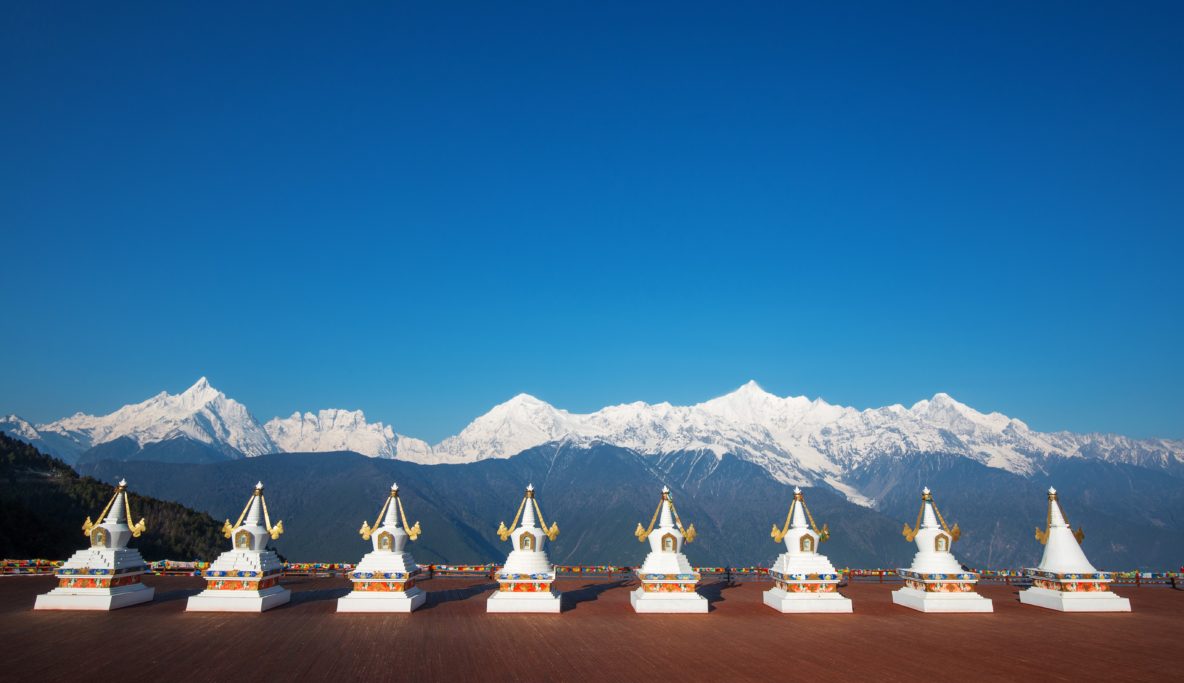Highest Peak
On the border of Zayu, Zogang, and Deqen County in Yunnan lies Kawa Gabo(ཁ་བ་དཀར་པོ།), the highest peak along the Meili Xue Shan, or the “Mainri Snowy Range”. As a whole, this peak and range are a part of the much larger Hengduan Shan, which borders the eastern side of the Tibetan Plateau as well as western Sichuan. With six peaks that reach over 6,000 meters and twenty more permanently covered in snow, the massive collection of mountains sits between the Lancangjiang River and the Salween River.
History of the Climb
The Kawa Gabo peak itself reaches 6,740 meters, and with dangerous vertical cliffs, it has created near impossible conditions to reach the summit. Numerous attempts have been made over the years, only to meet with tragic results. The primary attempt made by the Joetsu Alpine Club from Japan in 1987 had failed early on. Three years later the Academic Alpine Club from Kyoto University, paired with a Chinese unit, drew large protest from the Tibetans because of the mountain’s significance to their culture and religion. After moving ahead with the climb in spite of protests, the team was met with an avalanche on the night on January 3, 1991; all 17 individuals were presumed dead. The same club returned just five years later in 1996 to give another attempt, but had failed just as their predecessors.
And finally, an American team guided by Nicholas Clinch made several unsuccessful attempts on different peaks along the mountain between 1988 and 1993. After years of failed attempts, death, injury, and protest, the government banned any future attempts in 2001.
Protests Surrounding Kawa Gabo
Tibetan Buddhists believe this mountain to be the spiritual home of the warrior God Kawagarbo and throughout Tibet, it is visited by over 20,000 visitors each year looking to make their 240 kilometer pilgrimage around the peak. The ancient shamanistic religion, Bön, believed in a world filled with good and evil spirits, many of which are still recognized and relevant today.
Years of protests of climbing parties was due to the fact that Tibetans believe Kawagarbo will abandon them if any human reaches the peak. Stepping foot here would unleash disasters upon their villages and leave them unprotected by the Gods; this was not something the Tibetan people took lightly.
The Retreating Mingyong Glacier
From the east of Kawa Gabo, lies the sacred Mingyong Glacier, reaching into the Mekong River valley below. To signify its importance to their religion, two temples have been built on its lower edge.
One of these temples however, Taizi Temple, holds a significance to the scientific community as well. It has been a key factor in observing the almost 7% decrease of the Mingyong Glacier annually. Many believe this is due to the warming climate in Deqin over the years. This climate shift’s impact on Mingyong Village’s water supply, as well as its considerable effect on the natural biodiversity of the area, has sparked the Chinese government to take control of the ecological systems in the area in an attempt to slow down the rate of melting. So far they have been successful in their efforts.



